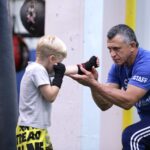Archive for July 2024
5 Functional Training Benefits You Might Not Have Realized
Training for aesthetics is fun, but training for functionality changes lives. Functional training benefits go beyond looks or even the gym, helping you manage whatever life throws at you, whether that’s keeping up with your kids, a physically demanding job, or just the side effects of aging. Learn more about how functional training might be the training method for you.
What is Functional Training?
Functional training is all about making your body better at handling everyday life. Think exercises that mimic real-life movements, so you’re not just building muscle, you’re getting better at life. Unlike your typical gym routine that targets one muscle group at a time, functional training gets multiple muscles working together to perform real life tasks.
How Functional Training Differs from Traditional Workouts
Traditional workouts are great for building strength and increasing the size of your muscles or losing weight, but they often focus on isolated muscle groups at a time. Functional training, on the other hand, is all about compound moves and making your body work better as a whole. You’ll be improving your balance, coordination, strength, and endurance all at once. And you might notice some visible differences in yourself as well.
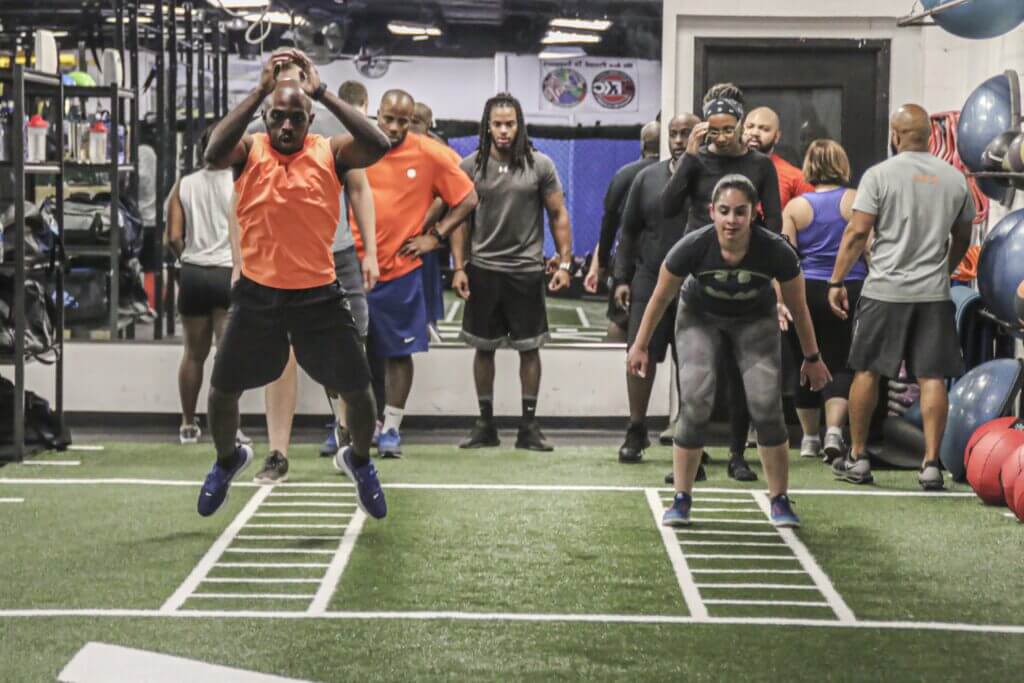
Benefit #1: Improved Daily Activities
One of the coolest functional training benefits is how it makes everyday tasks easier. Whether you’re lugging groceries, chasing after your kids, or just trying to get up off the couch, functional training helps you do it all more efficiently because you’ve trained and build stamina for the muscles and joints you use the most in your day-to-day life to handle heavier loads for extended periods.
Real-life Examples of Functional Strength
Picture yourself lifting a heavy box without straining your back or balancing on one leg to tie your shoe without toppling over. But functional training isn’t just about completing every day tasks. It’s also for your safety. Being able to stand up from any position, catch yourself when you trip, and jump are essential skills, not to be taken for granted, as you experience the aging process. Functional training preps your body for these real-life situations by making the muscles you use daily stronger and more coordinated.
Benefit #2: Better Balance and Coordination
Functional training really focuses in on core stability, but not just growing the muscles through situps and crunches. Functional training focuses on those small stabalizing muscles of your core, which is key for good balance and coordination, which means you’re less likely to take a tumble and more likely to move smoothly and confidently. It also improves your posture and makes you stand up taller and straighter. A strong core supports your back in more ways than one, and is especially important in preventing back injuries.
Core Exercises That Boost Balance
Unilateral workouts like single-leg deadlifts and squats, stability ball exercises, and rotational movements are functional training staples. These exercises challenge your balance and coordination, making you more agile and stable in everything you do on one or two legs.
Benefit #3: Injury Prevention
Functional training is also great for keeping injuries at bay. By focusing on movements that enhance joint stability and muscle resilience, you’re building a body that’s tougher and less prone to getting hurt. We mentioned back injury prevention and the benefits of improved balance, but functional training benefits go beyond those. Functional training helps strengthen your joints and ligaments to prevent injury during all sorts of activities, including sports. Professional athletes use functional training as a foundation for their sport-specific training to help prevent muscle strains and other injuries.
Why Functional Training Reduces the Risk of Injury
Functional exercises strengthen the supporting and most used muscle groups and joints in your body, which means fewer strains and sprains. This is super important for anyone who’s active, whether you’re an athlete or just enjoy a good workout.
Benefit #4: Enhanced Athletic Performance
Injury prevention isn’t the only functional training benefit athletes can expect. Athletes can really up their game and improve their overall performance with functional training. By working the movements they use in their sports with weights, they can enhance performance, cut down on injuries, and boost overall fitness.
Functional Training Benefits for Specific Sports
Take a soccer player, for example. They might focus on agility drills, while a basketball player works on explosive power and coordination. Functional training can be customized for any sport, leading to better performance on the field or court.
At X3 Sports, members who participate in Muay Thai often work with a personal trainer to strengthen key muscle groups that improve their coordination, balance, and power. Injury prevention in martial arts is very important and functional training is a large part of that.
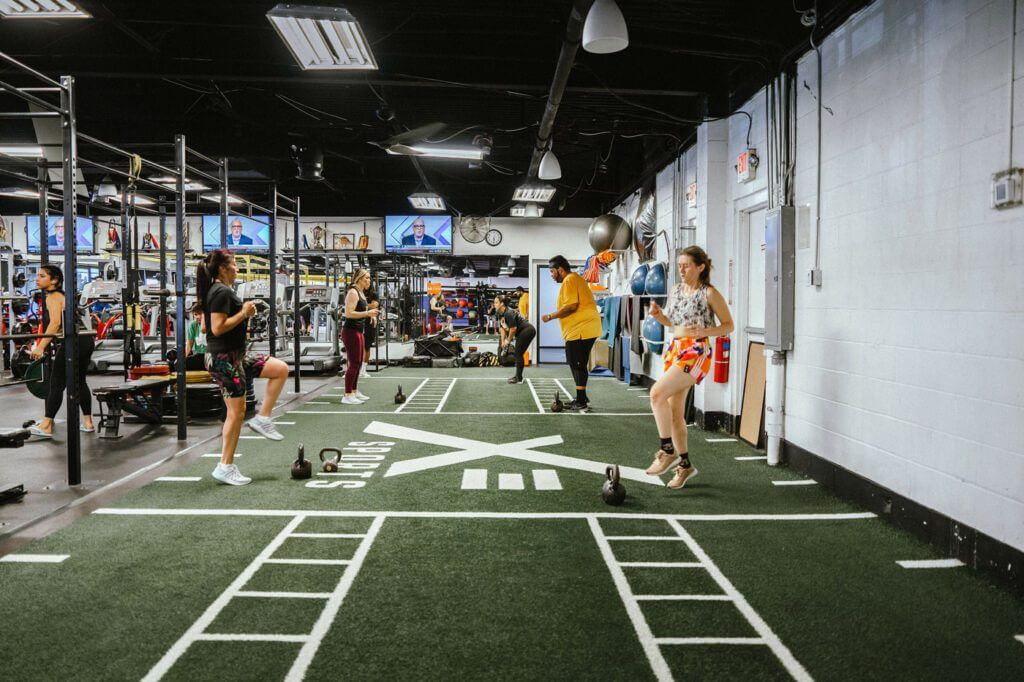
Benefit #5: Efficient and Versatile Workouts
Functional training is super efficient and inclusive to everyone regardless of their fitness level or exercise experience.
Since functional training targets multiple muscle groups at once and incorporates various fitness elements into one workout, you get more done in less time, making it possible to get in a full body workout in less than an hour every time you go to the gym.
Versatility for All Fitness Levels
It’s also incredibly versatile. Whether you’re a newbie or a seasoned athlete, you can tweak the intensity and complexity of the exercises to fit your level or your specific real-life agility concerns. This makes functional training perfect for everyone.
Where to Find Functional Training Benefits at X3 Sports
At X3 Sports, we’ve got a range of classes that use functional training movements, designed to help you get all these awesome benefits. Our experienced trainers will guide you through workouts that improve your strength, balance, coordination, and overall fitness.
Fast Track℠ Classes
X3 Sports’ Fast Track℠ is an easy way to experience functional training benefits in a group class. Our Fast Track classes include compound exercises that work multiple muscle groups at once. They also incorporate HIIT training practices to improve your muscle’s endurance and stamina. Each class includes some variation of functional movements, whether that’s box jumps, single leg squats, or burpees.
Power Track℠ Classes
While Fast Track℠ is all about endurance and fast muscle twitch, Power Track℠ is all about those heavy compound movements that build muscle stability and strength. In a Power Track℠ class, your trainer will guide you through a routine that focuses on strengthening one of your main muscle groups, whether that is legs, back, chest, or arms and shoulders. Power Track℠ movements typically include large compound exercises such as deadlifts, squats, and bench presses.
Sign Up for a Free Class Today!
Ready to see what functional training can do for you? Sign up for a free class at X3 Sports today and start your journey to a fitter, more functional you. With locations in West Midtown, Inman Park, Marietta, North Marietta, and Athens, we’re here to help you crush your fitness goals.
How to Find Youth Boxing Programs Near You
Keeping kids active and busy can be challenging if you don’t know what kind of program to enroll them in. Youth boxing programs near Fulton County are an engaging and enjoyable way to spark your child’s love for exercise and sports. These classes offer a workout while instilling discipline, persistence, and hard work, ensuring that the experience is always fun and never boring.
Why Youth Boxing?
Youth boxing isn’t just about learning to throw punches. It’s about building a foundation of physical fitness, mental discipline, and self-confidence. Kids who engage in boxing develop cardiovascular health, strength, and conditioning. The mental focus required in boxing training helps children concentrate better, manage stress, and build resilience. Plus, achieving boxing milestones boosts their confidence and self-esteem.
Physical Health Benefits of Boxing for Kids
Boxing offers numerous physical health benefits for kids. It significantly improves cardiovascular fitness, ensuring that their heart and lungs are healthy and strong. The sport also enhances hand-eye coordination, which is crucial for overall motor skill development. Training in boxing builds upper body strength, agility, and footwork, providing a comprehensive workout that promotes a healthy lifestyle.
Mental Health Benefits of Boxing for Kids
The psychological impacts of boxing are profound. The sport helps improve confidence as kids find their inner strength through training and competition. Learning discipline and respect is integral to boxing, and these lessons translate into better behavior and attitudes outside the gym. Boxing builds character, teaching kids to handle both victories and defeats gracefully. It also helps develop emotional control and mental focus, skills that are beneficial in academic settings and other aspects of life.
What is Youth Boxing?
Youth boxing programs near Fulton County or Athens are designed for children aged seven to seventeen. These programs introduce kids to the basics of boxing while guiding them through more advanced techniques as they progress. Children learn fundamental skills such as the correct fighting stance and basic punches. As they advance, they receive tips and training to enhance their skills further.
Understanding the Basics
Youth boxing training starts with the basics, teaching kids the correct stance, how to throw punches, and defensive maneuvers. These fundamentals are crucial as they provide the foundation for more advanced techniques. Kids learn how to position their feet, how to move in the ring, and the importance of maintaining balance.
Progressive Training
As kids become more proficient in basic skills, they move on to more complex training. This includes combination punches, defensive strategies, and footwork drills. Advanced training also involves learning how to spar safely and effectively, understanding ring tactics, and improving overall fitness and endurance. The progressive nature of the training ensures that kids are always challenged and engaged.
Early Interest and Development
Introducing kids to boxing at a young age can be beneficial for their physical and mental development. Even before the age of seven, kids can start with non-contact activities like shadowboxing, which helps them develop coordination and interest in the sport. This early start can pave the way for a smoother transition to more structured training as they grow older.
Parental Involvement
Parents play a crucial role in their child’s introduction to boxing. By practicing at home, parents can help nurture their child’s interest in the sport. This involvement not only helps build the child’s skills but also strengthens the parent-child bond through shared interests.
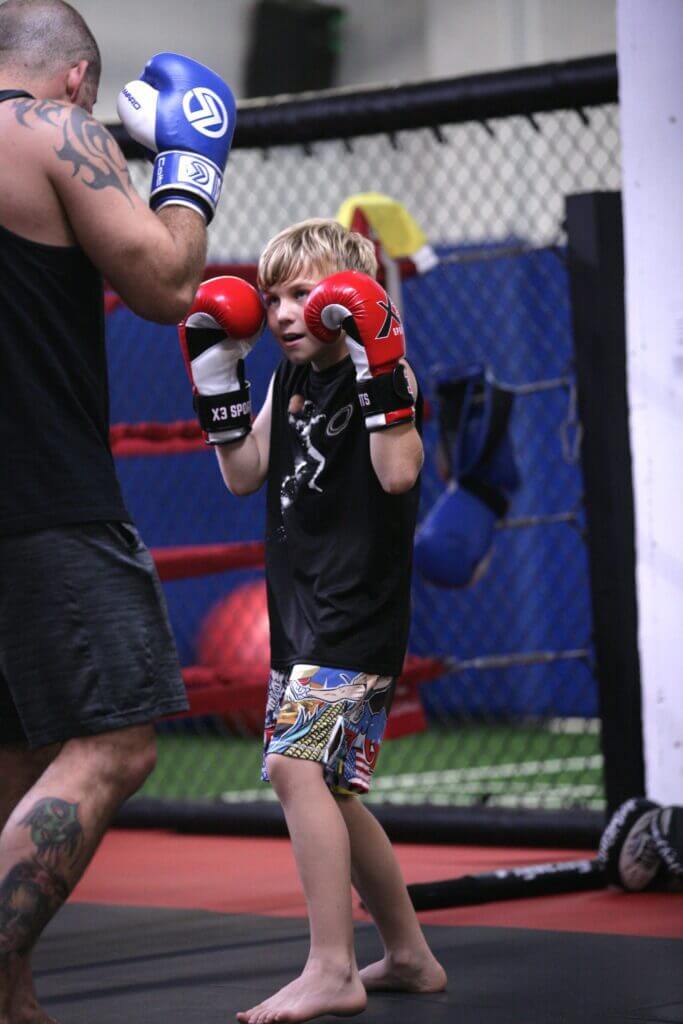
How to Start Your Search for Youth Boxing Programs Near Fulton County or Athens
Online Research and Reviews
Start your journey by searching online for youth boxing programs near Fulton County. Check out reviews and testimonials from other parents to get an idea of the program’s quality and effectiveness. Websites, social media pages, and local community forums can provide valuable insights into the reputation of different programs. Look for programs with consistently positive feedback, as this indicates a reliable and effective training environment.
Asking for Recommendations
Ask friends, family, and community members for recommendations. Personal experiences can provide valuable insights into the best programs available. Talking to people who have firsthand experience with local boxing programs can help you find hidden gems that might not be as well-publicized online. Community centers, schools, and sports clubs are also excellent sources for recommendations.
Visiting Gyms and Clubs
Visit local gyms and boxing clubs. Watch a class to see how it operates and speak with the coaches to understand their approach and philosophy. Observing a session allows you to see how the coaches interact with the kids and how the training is conducted. Pay attention to the gym’s atmosphere, the coach’s teaching style, and how engaged and happy the children seem. This firsthand observation can help you make an informed decision about the best program for your child.
Evaluating the Program: Trial Classes and Membership Options
Taking a Trial Class
Many gyms offer trial classes, which are an excellent way for your child to experience the program firsthand. Observe how the coach interacts with your child and how they respond to the training. Trial classes give you and your child a feel for the gym’s environment, the coach’s teaching methods, and the overall structure of the program. Use this opportunity to ask questions about the training routine, safety measures, and the program’s goals.
Membership Options and Costs
Understand the different membership options and their costs. Consider what works best for your family’s schedule and budget. Some gyms offer flexible payment plans, discounts for long-term commitments, or family packages. Compare the value offered by different programs to ensure you’re making a wise investment in your child’s development.
Making the Commitment: Supporting Your Child’s Boxing Journey
Encouraging Consistency
Help your child set a regular training schedule and encourage them to stick with it. Celebrate their progress and keep them motivated by setting small, achievable goals. Consistency is key to improvement in boxing, as regular practice helps reinforce skills and build fitness. Create a positive environment at home that supports their training routine.
Being Involved and Supportive
Attend matches and events to show your support. Celebrate their achievements and help them navigate any challenges they face. Your involvement can significantly boost your child’s enthusiasm and commitment to the sport. Being present at their training sessions, sparring matches, and competitions shows that you value their efforts and accomplishments.
What Equipment Do Kids Need to Start Boxing?
Kids Boxing Gloves & Wraps
Hand wraps and gloves are essential to protect hands and wrists. Kids’ gloves are designed to fit smaller hands, usually between 4 and 8 ounces. Hand wraps provide additional support and protection, preventing injuries during training and sparring. Ensure that the gloves and wraps are of good quality and fit your child properly to maximize safety and comfort.
Kids’ Boxing Bag
For beginners, a standing bag that sits low on the base is ideal. It provides stability and an appropriate height for kids of all sizes. A good quality bag can withstand the repeated impact of punches, making it a valuable investment for home training. Some bags come with adjustable heights, allowing them to grow with your child.
Kids Boxing Shoes
While not mandatory for beginners, boxing shoes offer better ankle support and grip, enhancing safety and performance. Proper footwear can prevent injuries and improve your child’s agility and movement in the ring. Look for shoes that fit well and provide adequate support without restricting movement.
Start Your Child’s Boxing Journey Today!
Youth boxing is an excellent way to keep children physically active while teaching valuable life skills. It’s a fun and productive way for kids to burn energy and build confidence. The sport offers numerous physical and mental health benefits, making it a fantastic choice for children of all ages.
Start your search for the best youth boxing programs near Fulton County today. Sign up for a free class at X3 Sports and let your child experience the excitement and benefits of boxing firsthand. With the right program and support, your child can thrive in this dynamic and rewarding sport!
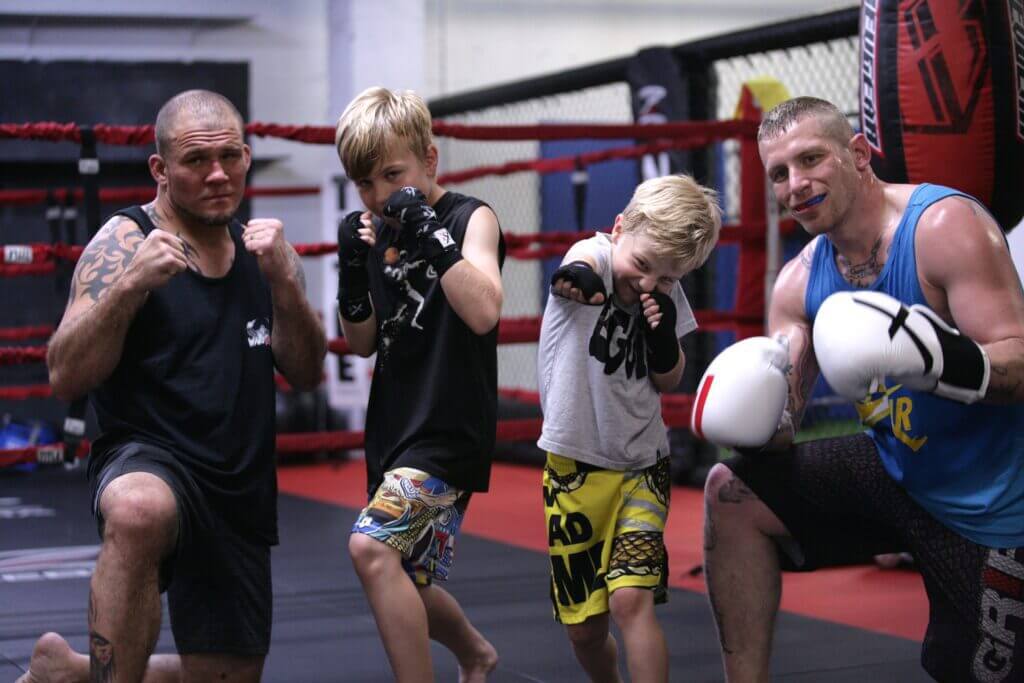
Youth Boxing Program | X3 Sports Family Plan | What is Youth Boxing Training and Should Your Child Do It? | Here Are 10 Benefits of Junior Boxing You Won’t Want to Miss
8 Benefits to Boxing Training for Teenagers
Boxing isn’t just about learning how to throw a punch. It’s a full-body workout that provides numerous benefits, especially for teenagers. If you’re a teen looking for a fun and engaging way to stay active, boxing might be the perfect fit. Here are eight compelling reasons why boxing training for teenagers is great:
1. Boosts Physical Fitness
Boxing training for teenagers is an excellent way to improve overall physical fitness. This sport combines cardio exercises, strength training, and agility drills, ensuring a comprehensive workout. Regular boxing sessions help build muscle, enhance cardiovascular health, and burn calories, making it a fantastic choice for teens who want to stay in shape and maintain a healthy lifestyle.
Cardiovascular Health: Boxing training involves intense cardio workouts that get the heart pumping and the blood flowing. This can improve heart health and reduce the risk of cardiovascular diseases later in life. For teenagers, maintaining good heart health is crucial as it sets the foundation for a healthy adult life.
Strength Training: Boxing requires strength in both the upper and lower body. Punching the heavy bag, doing push-ups, and performing various strength drills help build muscle mass and improve overall body strength. Strong muscles not only enhance performance in boxing but also support daily activities and other sports.
Flexibility and Agility: Boxing training involves a lot of movement, including footwork, dodging, and quick changes in direction. This helps improve flexibility and agility, which are essential for overall athleticism. Enhanced flexibility can also reduce the risk of injuries.
Weight Management: With obesity rates rising among teenagers, it’s more important than ever to find effective ways to manage weight. Boxing training for teenagers is a highly effective way to burn calories and shed excess weight. The high-intensity workouts ensure that teens stay active and healthy.
2. Enhances Self-Confidence
One of the significant benefits of boxing training for teenagers is the boost in self-confidence. Learning new techniques, mastering moves, and seeing tangible progress can significantly enhance a teen’s self-esteem. The sense of accomplishment from improving and achieving goals in boxing can spill over into other areas of life, fostering a more confident and positive outlook.
Skill Mastery: As teenagers progress in their boxing training, they learn and master various skills and techniques. This process of learning and improvement builds a sense of achievement. Each new skill mastered is a confidence booster, showing teens that they are capable of achieving their goals through hard work and dedication.
Body Positivity: Boxing training can also improve body image. As teens get stronger and more fit, they often feel better about their bodies. This improved body image can lead to higher self-esteem and greater confidence in social situations.
Performance in the Ring: For those who choose to compete, performing well in the ring can be a huge confidence booster. Successfully applying techniques and strategies learned in training during a match can be incredibly satisfying. Even if they don’t win every match, the progress and effort put into training and competing build resilience and self-belief.
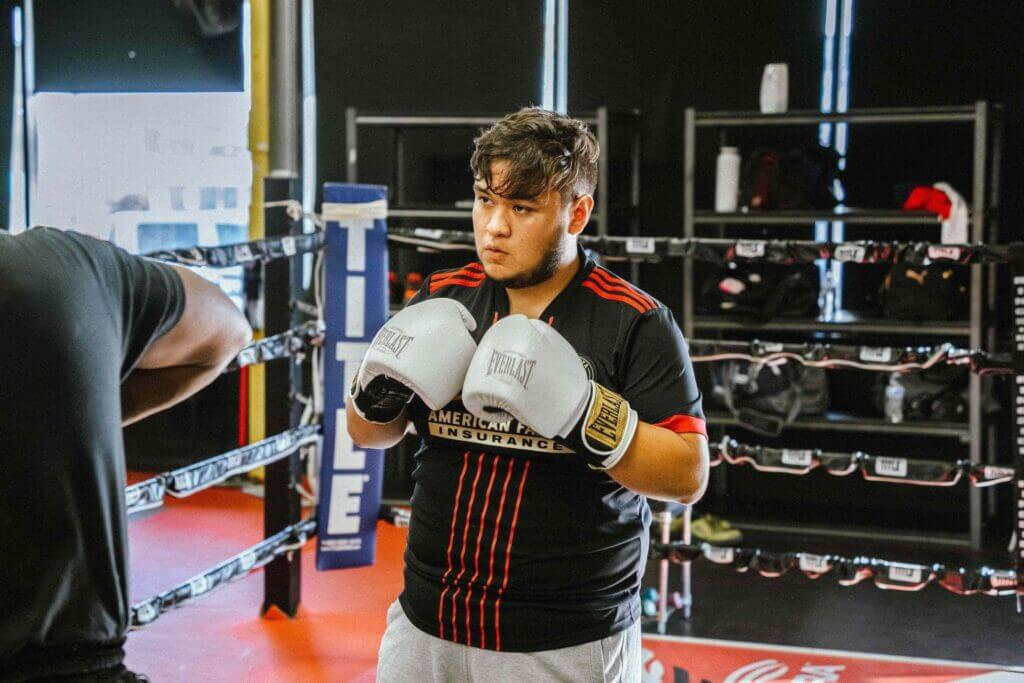
3. Teaches Discipline and Focus
Boxing training for teenagers requires a high level of discipline and focus. From adhering to a strict training schedule to concentrating on precise movements and techniques, boxing instills valuable life skills. These skills are crucial not only in sports but also in academics and personal growth, helping teens develop a disciplined and focused mindset.
Structured Training: Boxing training involves a structured schedule. Regular practice sessions, drills, and workouts require teens to stick to a routine. This structure teaches them the importance of consistency and dedication, which can translate into better time management and organizational skills in their academic and personal lives.
Goal Setting: Boxing training encourages goal setting. Whether it’s mastering a new punch combination, improving fitness levels, or preparing for a match, setting and achieving goals is a key aspect of boxing. This practice of setting and working towards goals can help teens develop a proactive and goal-oriented mindset in other areas of their lives.
Mental Focus: Boxing requires intense concentration. In the ring, a momentary lapse in focus can lead to a missed opportunity or even getting hit. This need for constant awareness and focus can improve a teen’s ability to concentrate and stay present, which can be beneficial in their studies and other activities.
4. Provides Stress Relief
The teenage years can be stressful, filled with academic pressures and social challenges. Boxing training for teenagers offers an excellent outlet for stress relief. The physical exertion combined with the mental focus required in boxing can help clear the mind, release pent-up energy, and reduce stress levels, promoting overall mental well-being.
Physical Release: Boxing training involves high-intensity physical activity, which is a great way to release pent-up energy and stress. Hitting the heavy bag or sparring can be a safe and effective way to channel frustrations and negative emotions, leaving teens feeling more relaxed and centered.
Endorphin Boost: Exercise, including boxing, triggers the release of endorphins, the body’s natural mood lifters. This can lead to improved mood and a sense of well-being. Regular boxing training can help teens manage stress and anxiety, contributing to better mental health.
Mental Focus: Boxing requires full mental engagement, which can help teens take their minds off their worries. The need to concentrate on techniques, movements, and strategies during training sessions can provide a mental break from academic and social pressures, allowing teens to return to their daily lives with a clearer mind.
5. Develops Self-Defense Skills
Boxing training for teenagers equips them with essential self-defense skills. Learning how to defend oneself, improve reflexes, and react quickly in potentially dangerous situations can provide teens with a sense of security and peace of mind. These skills are invaluable and can enhance personal safety and confidence.
Basic Self-Defense: Boxing training teaches fundamental self-defense techniques. Teens learn how to protect themselves, block attacks, and deliver effective counter-strikes. These skills can be crucial in real-life situations where self-defense is necessary.
Reflexes and Reaction Time: Boxing training improves reflexes and reaction time. The ability to react quickly to an opponent’s moves is essential in the ring and can be beneficial in everyday life. Quick reflexes can help teens avoid accidents and respond effectively in emergencies.
Situational Awareness: Boxing also teaches situational awareness. In the ring, being aware of an opponent’s movements and anticipating their actions is crucial. This heightened sense of awareness can help teens stay alert and avoid potentially dangerous situations outside the gym.
6. Improves Coordination and Balance
Boxing training for teenagers involves a lot of footwork, head movement, and precise punching, all of which improve coordination and balance. Enhanced agility and coordination can benefit teens in other sports and physical activities, making them more well-rounded athletes.
Footwork: Footwork is a critical aspect of boxing. Training drills that focus on moving efficiently and maintaining balance can significantly improve a teen’s overall coordination. Good footwork also translates to better performance in other sports that require quick changes in direction and agility.
Hand-Eye Coordination: Boxing training enhances hand-eye coordination. Throwing punches accurately while avoiding incoming strikes requires precise coordination between the eyes and hands. This skill can benefit teens in various activities, from playing musical instruments to participating in team sports.
Core Stability: Maintaining balance while throwing punches and moving around the ring strengthens the core muscles. A strong core improves overall stability and posture, reducing the risk of injuries and enhancing athletic performance.
7. Fosters Healthy Social Interaction
Joining a boxing gym introduces teenagers to a community of peers who share a similar interest. Boxing training for teenagers fosters healthy social interactions, allowing them to make new friends, learn from others, and be part of a supportive and motivating environment. The sense of camaraderie in a boxing gym can be incredibly uplifting and inspiring.
Community Building: Boxing training creates a sense of community. Training alongside others, sharing experiences, and supporting each other through challenges can build strong bonds and friendships. This sense of belonging can be particularly important during the often tumultuous teenage years.
Mentorship: Experienced trainers and older peers in the boxing gym can serve as mentors for teenagers. These role models can provide guidance, support, and valuable life lessons, helping teens navigate both their training and personal challenges.
Teamwork and Sportsmanship: While boxing is often seen as an individual sport, training and sparring with partners teaches important lessons in teamwork and sportsmanship. Respecting opponents, cooperating with training partners, and celebrating each other’s successes foster a positive and supportive environment.
8. Encourages Goal Setting and Achievement
Boxing training for teenagers involves setting personal goals, whether it’s mastering a new technique, improving fitness, or preparing for a match. Achieving these goals requires dedication, hard work, and perseverance. The satisfaction of reaching these goals can instill a sense of accomplishment and motivate teens to tackle other challenges in life.
Personal Goals: Boxing encourages teens to set and work towards personal goals. These can range from mastering a specific punch combination to improving endurance or winning a match. Setting and achieving these goals teaches valuable lessons in perseverance and determination.
Progress Tracking: Boxing training allows for clear progress tracking. Teens can see tangible improvements in their skills, fitness levels, and performance. This visible progress can be highly motivating and encourage a growth mindset, where continuous improvement is valued.
Resilience: The challenges faced during boxing training build resilience. Teens learn to push through difficulties, recover from setbacks, and keep striving towards their goals. This resilience is an important life skill that can help them navigate future challenges with confidence and determination.
Ready to Dive into Boxing Training for Teenagers?
Boxing training for teenagers offers a unique blend of physical fitness, mental discipline, and personal growth. If you’re a teen looking for a sport that challenges you both physically and mentally, boxing might be the perfect choice. So why not give it a try? Grab those gloves, step into the ring, and experience all the incredible benefits that boxing has to offer!
Sign Up for a Free Class
Step into the ring with us at X3 Sports and knockout a free class! If you’re a teenager or a parent looking to build an efficient workout routine, boxing training for teenagers may be the missing piece to the puzzle you’ve been looking for.
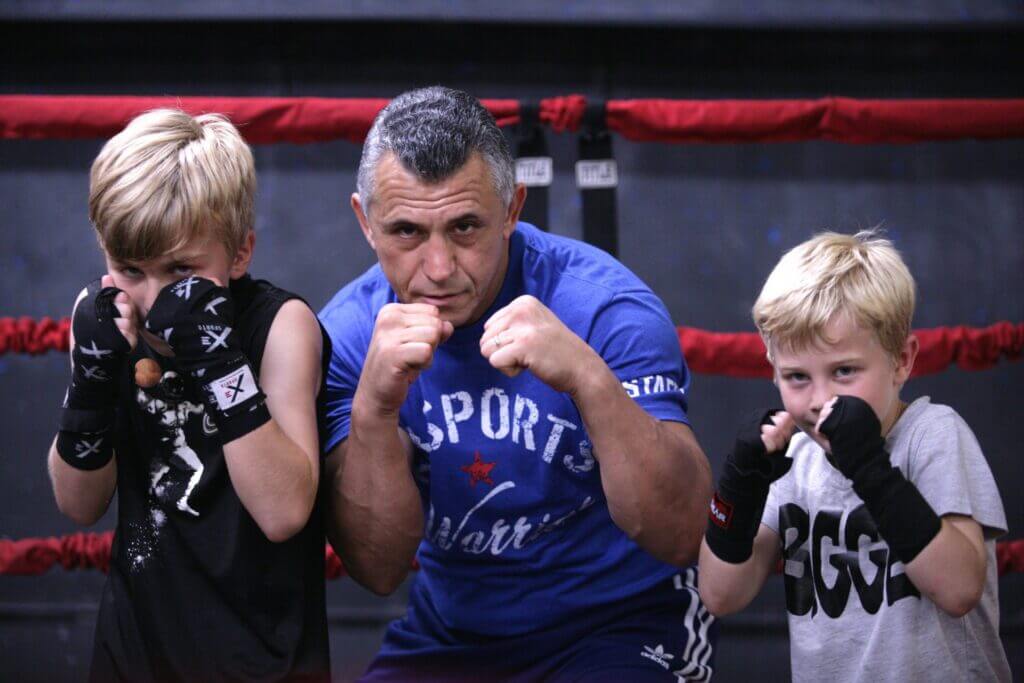
What is Youth Boxing Training and Should Your Child Do It?
Looking for a different kind of after-school activity? Youth boxing training is a game-changer for youths and parents alike. Learn more about how this rising sport is inspiring Atlanta youths to take control of their fitness.
Youth boxing has gained popularity among parents in recent years, and for good reason. This sport not only provides a fantastic workout with many physical benefits but also teaches discipline, confidence, and social skills.
Keep reading to learn more about youth boxing training, exploring its history, safety aspects, and what a typical class looks like.
A Brief History of Boxing
Boxing is one of the oldest sports known to man. While it has had a violent reputation in the past, modern iterations of boxing training focus on discipline, sportsmanship, and perseverance.
Origins of Boxing
Boxing has ancient roots, with evidence of the sport all the way back to the ancient civilizations of Egypt and Greece. Initially, it was a brutal contest of strength and endurance. Ancient Egyptians depicted boxing scenes in their artwork, showcasing its place in their regular entertainment.
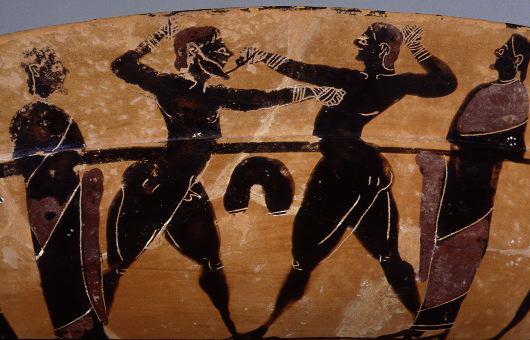
Side B: boxers
Photograph by Maria Daniels, courtesy of the University Museums, University of Mississippi
Boxing was one of the main events in the Olympic Games of Ancient Greece, highlighting its popularity and competitive nature. These early forms of boxing were often unstructured and dangerous, which reflected the culture around sporting events at that time.
Boxing’s Transition to the Modern World
By the 18th and 19th centuries, boxing had established itself as a popular sport in England, eventually spreading to the United States. The introduction of the Marquess of Queensberry Rules in the late 19th century marked a significant transformation in the sport.
These new rules standardized the use of gloves, boxing rounds, and weight classes, making boxing safer and more regulated for everyone involved. The focus shifted from brute strength to technique and skill, allowing athletes to showcase their strategic prowess and physical conditioning without risk of serious injury. This evolution made boxing more accessible and appealing to a broader audience, setting the stage for the mainstream version of the sport we see today.
Boxing for Youths: A Recent Development
While boxing for adults has a long history, youth boxing training is a relatively recent development. Recognizing the sport’s potential to teach valuable life skills to kids, many gyms began offering youth programs, providing a safe and structured environment for children to learn the sport and grow in it.
Youth boxing training programs are designed to introduce young athletes to the fundamentals of boxing techniques while emphasizing safety and personal development. Many youth boxing gyms focus not only on teaching the rules and techniques of the ancient sport but also help youths in their personal development by teaching discipline and providing mentorship and encouragement.
Safety in Youth Boxing Training
With such a brutal history, it’s no surprise that many parents have questions about their child’s safety in a boxing class.
Safety is paramount in youth boxing training. Ensuring a safe environment helps prevent injuries and allows young athletes to focus on learning and enjoying the sport. Proper safety measures, including the use of protective gear and qualified supervision, are essential to creating a positive and secure training experience.
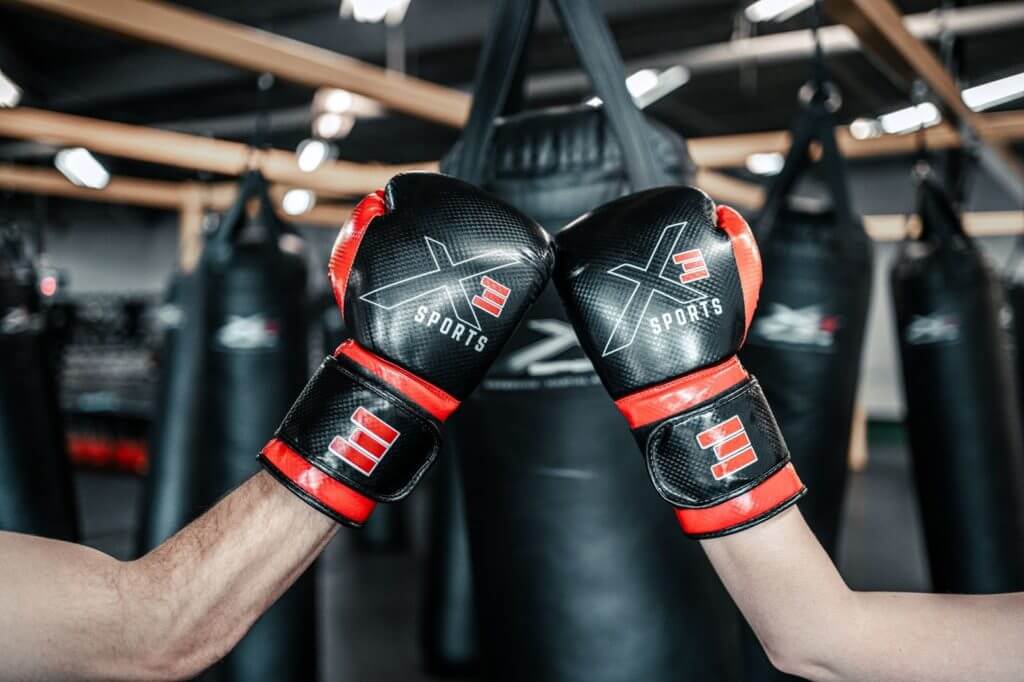
Protective Gear
To safeguard young boxers, proper protective gear is essential. Gloves and hand wraps are specifically designed to protect the hands and reduce the impact of punches, minimizing the risk of hand injuries. Headgear provides crucial cushioning to protect the head during sparring sessions, significantly reducing the risk of concussions and other head injuries.
Additional gear, such as mouth guards and protective padding, further enhances the safety of young athletes during training. The physical impact experienced during youth boxing training is no more than they would experience in any other contact sport.
Supervision and Coaching
Qualified trainers play a crucial role in youth boxing. Certified and experienced coaches make sure the techniques are taught correctly and safely, helping young boxers develop proper form and avoid injury to themselves and others. These trainers are trained to recognize and address any potential safety concerns, ensuring that the training environment remains secure and supportive. A safe training environment allows young boxers to focus on their development and enjoy the sport without risks.
What a Youth Boxing Class Looks Like
Basic Techniques and Skills
Youth boxing training classes focus on teaching fundamental boxing skills. Punching techniques are introduced, emphasizing proper form and using different types of punches, such as jabs, hooks, and uppercuts.
Footwork is another key part of boxing training, which helps develop balance and agility when moving around the ring (also very beneficial for youths who participate in other sports such as football!)
Defensive techniques, including blocking and slipping, are also taught to help young boxers protect themselves from incoming strikes. Mastering these basic techniques is essential for building a strong foundation in boxing, and youth would never begin sparring without displaying mastery over these skills.
Structure of a Typical Class
A typical youth boxing class is well-structured to maximize learning and fun. Classes begin with a warm-up, which includes stretching and light cardiovascular exercises like jogging and jump roping. These warm-ups are crucial for preventing injuries and ensuring that muscles are adequately prepared for the workout.
Following the warm-up, the kids in the class are directed through a series of drills to reinforce good boxing techniques. These drills may include shadow boxing, heavy bag work, and partner exercises. The class typically concludes with instructor pad work, or supervised sparring for more advanced students, where young boxers can apply their skills in a controlled environment with immediate feedback from their coach. This structured approach ensures that each class is productive, engaging, and safe.

Fun and Engaging Activities
Keeping young boxers engaged is key to keeping them interested and excited about what they’re learning. Coaches use games and fun activities that involve boxing skills, such as relay races or obstacle courses to engage students while still focusing on training.
Team challenges and group exercises foster teamwork and camaraderie, allowing participants to build friendships and learn to support each other. This helps create a positive and motivating atmosphere, encouraging young boxers to stay committed to their training.
Benefits of Youth Boxing Training
We can’t talk about youth boxing training without discussing the many benefits of boxing training for youths. Boxing training is an all-encompassing sport that requires physical and mental dedication, a great practice in endurance for youths.
Physical Benefits
Regular participation in boxing classes improves overall fitness, enhancing cardiovascular health, strength, and endurance. The various drills and exercises help develop coordination and balance, essential motor skills that benefit young athletes in all areas of life. As children become more physically fit, they often experience increased energy levels and improved performance in other sports and activities.
Mental Benefits
The mental advantages of youth boxing training are equally, if not more, important to note. As young boxers learn new skills and overcome challenges, they build confidence and self-esteem. The discipline required to master techniques and attend training sessions regularly helps foster a sense of responsibility and focus. These mental benefits extend beyond the boxing ring, positively impacting academic performance and personal development.
Social Benefits
Social development is another key benefit of youth boxing training. Being in a team-oriented environment encourages camaraderie and sportsmanship, helping young athletes learn to work together and support each other. The friendships formed during boxing classes often extend beyond the gym, creating a strong sense of community and belonging. These social interactions are vital for developing communication skills and building positive relationships.
Youth Boxing Programs at X3 Sports
Youth boxing training is an awesome for parents looking to give their children a fun, challenging, and rewarding activity after school or during the summer. It promotes physical health, mental toughness, and social skills, preparing kids for success both in and out of the ring. Encouraging your child to try youth boxing can lead to a lifelong love of the sport and the development of valuable life skills.
At X3 Sports, we offer comprehensive youth boxing programs designed to develop young athletes in a safe and supportive environment. Our programs are tailored to meet the needs of each participant, ensuring that they receive personalized attention and guidance. Experienced trainers work closely with young boxers to help them achieve their goals and reach their full potential.
Sign Up for a Free Class
Interested in seeing if youth boxing is the right fit for your child?
Sign up for a free class at X3 Sports and experience our dynamic training firsthand. Our free class provides an opportunity for young athletes to experience boxing first-hand. But beware, once they try it once, they’re never going to want to stop.



